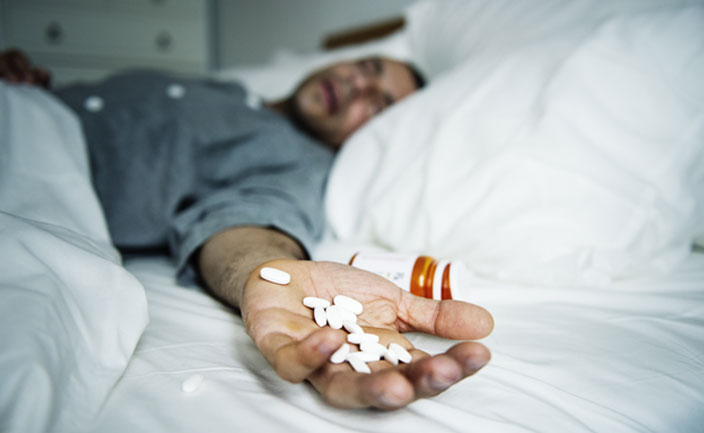
Why is heroin so addictive
Similar to many drugs, the addictive nature of heroin is connected to its result on the brain, in which its techniques the inspiration and enjoyment centers of the brain into preferring the drug and keeping in mind the positive sensations connected with it. It also reduces responses to the health issue induced by heroin, making it simpler to keep using than to come off it.
What is heroin?
Heroin is an opiate, developed from morphine, which is drawn out from the opium poppy. Opioid drugs are used as pain relievers, for the many parts, and percentages are used in prescription drugs and those which are readily available nonprescription. Heroin is an extremely effective opiate, normally offered as a white or brown powder, and can be smoked, injected and snorted.
How does it make you feel?
Heroin provides users a sensation of bliss, making them rejoice & drowsy both. It is the most addictive drugs out there; the ‘rush’ is, in fact, not as extreme such as drug or crystal meth.
The high from heroin is also relatively brief and does not last as long as many prescription drugs, while tolerance constructs rapidly. This leaves routine users more susceptible to a heroin overdose.
The very first dosage of heroin is normally referred to as really undesirable and triggers lightheadedness and throwing up. It also lowers the heart rate and slows breathing, leaving the user’s mind ‘fuzzy.’
It is hence not the feelings caused by heroin that make it so addictive.
How does heroin impact brain chemistry?
Heroin impacts the parts of the brain that are included with satisfied, anxiety, sedation, and stress, and anxiety (drowsiness). As quickly as the drug strikes the brain, the user rejoices and unwinded, devoid of any stress and anxiety or anxiety that they may have otherwise been feeling.
With time, heroin abuse also begins to impact the parts of the brain included with self-discipline and judgment. The user will start to long for the drug, and the brain will reduce the negative impacts of heroin, whilst stressing the excellent sensations that include taking a hit. This ultimately produces a major reliance.
When thinking about what heroin addiction is like, it is essential to think about both the instant impacts of the drug and how it can affect on day-to-day life. There are many factors people at first abuse heroin.
Agonizing memories or a requirement to leave from truth frequently leads many people down the course to heroin abuse, and many addicts will explain how great the drug made them feel when they initially took it. The sensations of heat and satisfaction can be simply what some people are searching for, but it can instill an effective desire to use heroin consistently.
Some people will be so taken in by heroin and their requirement for it that absolutely nothing else will matter to them. What most heroin addicts will concur on is that they have never ever accomplished a high as great as their very first one.
The excellent sensations never ever last and a heroin addiction can ultimately totally ruin the life of the addicted individual. It can have a terrible effect on health and relationships and leave whole families broken and destitute. It prevails for many un-addicted people to believe that it is just the addict who is impacted, but this is just not real.
There is no rejecting the effect that heroin addiction can have on the person. Heroin dealerships frequently cut their item with other compounds in a quote to increase their earnings.
An addict who frequently takes a particular quantity of heroin that is, state, forty per cent pure might suffer a deadly overdose by taking the exact same quantity of heroin that is seventy per cent pure. There is also a danger that the addict might have a deadly or serious response to among the compounds that has been contributed to the heroin. Each time a heroin addict gets his/her repair, there is a threat that it might be the last.
When they cut back or stop their usage of the drug, lots of addicts also do not understand that their tolerance to heroin can fall rapidly. Even if they stop heroin for a matter of days, their tolerance levels can drop drastically. If stated specific took the very same quantity that he or she used to take, returning to the drug afterwards might quickly lead to a deadly overdose.
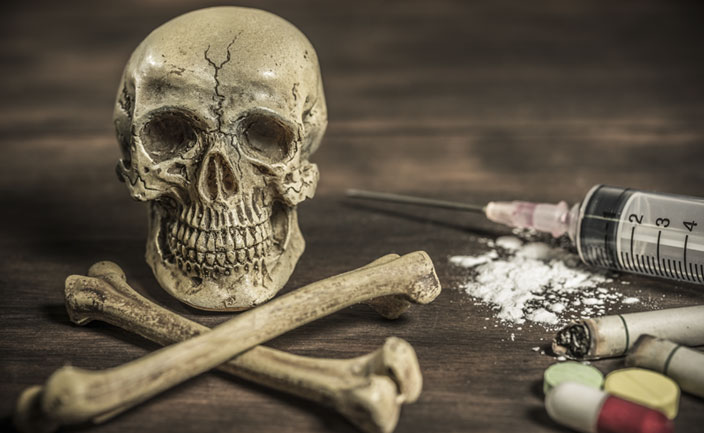
Health Results of Long-Term Use
They can experience all sorts of health repercussions when people continue to use heroin in spite of its threats. Body systems affected consist of the:
- Nerve system: Heroin’s effect on the brain is extensive and deep. According to NIDA, those who use heroin over an extended period of time can reveal degeneration, which might cause a minimized capability to make choices and/or manage habits.
- Breathing system: Opiates like heroin, sedate the breathing system. That implies people in the middle of a heroin high can breathe much slower than they would generally.
- Anesthesiology, and it’s a huge threat for persistent users mainly because these users tend to take in substantial quantities of drugs extremely frequently, and each huge dosage can stop their breathing.
- Cardiovascular system: Big heroin dosages can also trigger and stop the heart death, but long-lasting heroin injectors can deal with even more cardiovascular risks.
- Gastrointestinal system: Heroin’s sedating qualities can have a strong effect on the health of the gut. When food and water move too gradually through these passages, irregularity and bloating can take hold. As a post in
Medical Sociology explains this is a normal part of life for persistent heroin users, even though they may never speak about the concern.
They might always feel off-kilter and ill, but they might not have anybody to talk with about the problem. They might not get sufficient aid for the issue, either, which might put them at threat for obstructions and intestinal tract emergencies.
Heroin is simple to gain access to
There is a picture of heroin users as homeless, or people who were currently experiencing drug addiction that simply naturally advanced to more difficult drugs. Lots of heroin addicts begin off by ending up being addicted to prescription opioids.
Popular opioids offered on prescription in the UK consist of:
- Morphine
- Fentanyl
- Codeine
- Oxycodone
- Tramadol
These drugs are greatly managed and do not supply the same strength as a hit of heroin, and they are the same thing. As tolerance to a prescription drug develops, the user might begin to take increasingly more, till they are not able to get a prescription for it any longer.
On the street, prescription opioids are exceptionally difficult to source, and even when they can be found, they cost a lot. A single 50mg Tramadol tablet expenses ₤ ten on the streets, while a bag of heroin can be as little as ₤ 5.
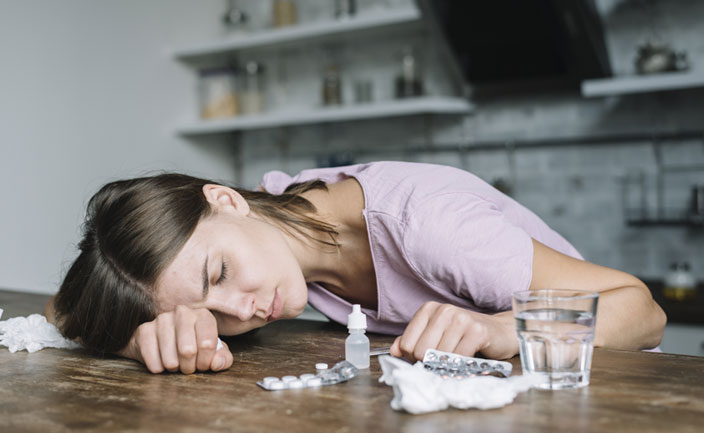
Heroin withdrawal symptoms
Many people who use heroin state that it is, in fact, the withdrawal from the drug that makes it so challenging to give up. When addiction has been formed, the user needs a specific quantity of heroin in their system to prevent ending up being ‘dope ill’.
While tolerance to the drug may indicate that they do not feel the very same rush of ecstasy any longer, they physically need to keep the drug in their system to prevent withdrawal.
Withdrawal symptoms normally start within the very first 24 hr after the last hit, peak within 36 to 72 hours, and can last approximately ten days. For persistent users, this might start within 4 hours and continue for as much as four weeks.
How much time does it need to get addicted?
Heroin addiction does not start after simply one use, as lots of people think, the satisfying sensations that it causes can inspire people to use it once again. A mental and physical reliance on heroin might take a while to embed in, throughout which time the user will most likely believe that they have their use under control. As tolerance to the drug begins to go up, they will need to take more of it, and more regularly, to feel the same results.
For this factor, a heroin user is normally currently an addict before they even understand that there is an issue.
The preliminary impacts of heroin consist of a rise of feeling– a “rush.” This is frequently accompanied by a warm sensation of the skin and a dry mouth. In some cases, the preliminary response can consist of throwing up or serious itching.
After these preliminary results fade, the user ends up being sleepy for many hours — the fundamental body functions, such as breathing and heartbeat decrease.
Withdrawal consists of the severe physical and psychological symptoms which are experienced if the body is not provided once again with the next dosage of heroin. Withdrawal symptoms consist of uneasiness, pains, and disorders in the bones, diarrhea, throwing up, and extreme pain.
The extreme high a user looks for lasts just a couple of minutes. With continued use, he needs increasing quantities of the drug simply to feel “normal.”
Those who are addicted to heroin not just end up being physically reliant on the compound, but are also scared to stop using for worry of the symptoms they might experience when they stop using. Withdrawal symptoms from heroin can establish as quickly as a couple of hours after continual use.
- Extreme yearning for heroin
- Severe sweating
- Queasiness and throwing up
- Extreme muscle pains and pains
- Constraining in the limbs
- Sensations of the heaviness of the body
- Severe pain in bones and muscles
- Weeping jags
- Sleeping disorders
- Cold sweats
- Runny nose
- Fever
- Diarrhea
When other medical conditions are present, death can happen.
Symptoms & signs
Using heroin is a bit like getting a loan– you experience some obtained excellent sensations throughout the high. Still, then you need to repay that financial obligation as you go through withdrawal. It is just after you have repaid the “financial obligation” that you can go back to regular and feel much better once again naturally.
Everybody’s experience of heroin withdrawal is different, but here are a few of the most normal symptoms.
Fever
Body temperature level differs from one person to the next, in addition to elements like time of day and menstruation. Still, normally, a temperature level of 99– 99.5 F (37.2– 37.5 C) is thought about to be a fever in grownups. A fever is one method your body battles health problems or infections. Still, when you are going through heroin withdrawal, the fever is not serving a helpful function in battling an infection, so there is not likely to be damaged in taking steps to manage it.
Heroin Cravings
Many people who are withdrawing from heroin experience a strong desire to take more heroin. This is referred to as experiencing yearnings and prevails amongst people withdrawing from lots of addictive compounds.
State of mind change
Feeling depressed, nervous, or irritable, also called having a dysphoric state of mind, is a regular part of heroin withdrawal. Even without a distressing past, these state of mind change would be anticipated, but lots of people who use heroin experience long-suppressed sensations connected to previous injury or abuse when they come off the drug. This is among the factors, and it is very important to have psychological help while you are going through withdrawal.
These sensations are normally extreme throughout heroin withdrawal; they tend to end up being less extreme once the withdrawal phase is over. If you are withdrawing in a cure center, take advantage of the help provided, and try set up in the neighborhood when your stay is over.
Extreme Physical Fluids
As you go through heroin withdrawal, you might experience an overproduction of physical fluids, such as sweat, tears, and a runny nose. You might also observe your hairs standing on end. Similar to other physical withdrawal symptoms, these steps belong to your body, bringing itself into balance.
Diarrhea and Stomach Pain
Diarrhea or loose, watery, and regular defecation is also normal with heroin withdrawal. These symptoms might be accompanied by stomach pain brought on by convulsions in the gastrointestinal system.
Queasiness and Throwing up
These symptoms are upsetting; queasiness and throwing up are normal elements of heroin withdrawal. It uses you out, makes you feel really unpleasant, puts you off your food, and keeps you near the restroom.
Sleep Issues
People going through heroin withdrawal normally experience, which, combined with stress and anxiety and sleeping disorders, can make you feel upset. Heroin withdrawal frequently triggers sleep issues, especially sleeping disorders (having problems getting to sleep or staying sleeping).

Is there a cure for heroin addiction?
Heroin addictions can be successfully dealt with. Thousands of families throughout the United States have banded together to reach out to the people they enjoy and offer genuine helping. When done effectively, a cure can be extremely reliable, even in people who have supported a heroin addiction for many years or perhaps years. A popular option is heroin detox & rehab at a private treatment clinic.
Families that wish to belong to that success story can do so by following these steps.
Step 1: Understand what heroin abuse appears like.
It may sound uncommon, but it is real that people who have an active addiction can keep that concern concealed from family members and buddies for months or even years. People who use are most likely people who will have an addiction at some point.
Signs of use can consist of:
- Track marks on the legs or arms
- Frequent sedation
- Unexpected need for personal privacy
- Relentless need for cash
- Social withdrawal
- Pinprick students
- Sluggish breathing
People who use heroin might also leave stuff behind. Some people also develop stashes of heroin, so they will have ongoing access to the drug.
Step 2: Examine the damage.
Some people have symptoms that other people just do not have. According to research, 22-65 percent of people who inject drugs like heroin establish skin infections due to that needle use.
An individual who is brand-new to the addiction procedure and has extremely little experience with compound abuse may be able to manage an outpatient addiction program. Those having a hard time from heroin addiction need more extensive care, and that normally suggests inpatient cure.
Step 3: Hold an intervention.
A heroin intervention allows the family to detail all of the symptoms of addiction they have seen, in addition to all of the factors they may point out that make addiction cure needed. This is a scheduled and structured talk everything about addiction’s effects and the individual’s future, and it might be an excellent method to get the recovery procedure rolling.
Some families work with specialists called interventionists to help them resolve their addiction. The interventionist helps the family to comprehend the addiction and how it works, and the interventionist helps the family strategy what to state in a conference.
Other families have casual talks, one on one, with an individual who has an addiction. They do not try to force with information or stats, but they do try to make the addiction issue clear for the individual in need. And they make the need for cure clear.
When these talks are complete, the family is all set to progress with the cure. That cure relocates an extremely foreseeable method.
Step 4: Enlist in medical detox.
Opioid withdrawal is hardly ever thought about dangerous, according to the United States National Library of Medication, but it can be exceptionally unpleasant. People who have been through the procedure frequently compare it to an extremely serious case of influenza. While they stay in the middle of those sensations, they might find it difficult to prevent the temptation to regression to heroin.
Medical detox can help, as clinicians can use replacement medications that imitate the step of heroin. These drugs do not trigger a high, but they can keep flu-like sensations from establishing.
Step 5: Select the ideal medication.
Two main medications might be used in a medical detox program for heroin addiction: Suboxone (buprenorphine and naloxone) and methadone. Both are replacement medications that can trick the brain into thinking it has access to the drugs it desires, but each medication operates in somewhat different methods. One might be best for some people while the other may be best for somebody else.
In a side-by-side contrast research study released in the Journal of Compound Use, scientists report that people who use Suboxone feel a greater quantity of psychological clearness when compared to people taking methadone. They also had more self-confidence, and they felt subjected to a smaller sized quantity of preconception. All of these are positive points, and they might suggest that Suboxone is the ideal medication for some.
According to a research study released in the Journal of Neurosciences in Rural Practice, the seriousness of the addiction is a crucial point to think about when selecting a medication. It may not be best for people with extreme addictions.
An individual’s medical detox company normally makes medication choices, but understanding a little about what medications have been right for others with addictions might be handy to people in need.
Step 6: Anticipate instant assistance.
When medical detox is complete, people with addictions move on to cure programs. The NIDA reports that Cognitive Behavioral Cure (frequently used in drug rehabilitation programs) can help people to boost their self-discipline.
Abilities improve with time, but plainly, people can find a lot even in the early part of the cure. When the program is complete, the abilities they find here might help them to prevent those early regression activates they may experience.
Step 7: Anticipate long-lasting change.
While much of the relief people may feel in rehabilitation takes place rapidly, within a couple of weeks of beginning the care program, advantages can continue for a long duration of time. People normally use conscious meditation early in healing, but they may continue to use it throughout life.
A cure might help people to get rid of an addiction, and it might also help people to conquer other difficulties they may deal with throughout life. With the aid of rehabilitation, people might turn their whole lives around.
Other Arrange I Drugs
- LSD
- Cannabis
- Euphoria
- Mescaline
- GHB
- Psilocybin
- Khat
- Bath Salts
Step 8: Enlist in aftercare.
Addictions to heroin can be conquered, but as a research study in the Journal of Addictive Diseases mentions, healing may stagnate in a straight line. Heroin addiction can be thought about a chronically relapsing condition, which may indicate that people who had an addiction can be at danger for regression for the rest of life.
One method to get rid of that difficulty is to enlist in a structured aftercare program. These programs use continuous help through:
- Support system conferences with peers
- Mutual aid meetings, such as Narcotics Anonymous
- Medication management, as need
- Touch-up therapy sessions
- Readmission to cure, as need
Some people register in these programs and stay included for simply a couple of months. Others stay included for several years. Still, others use a stair-step technique in which they make use of some services for a brief time and after that use, just less-intense help (like support system) as time goes on.
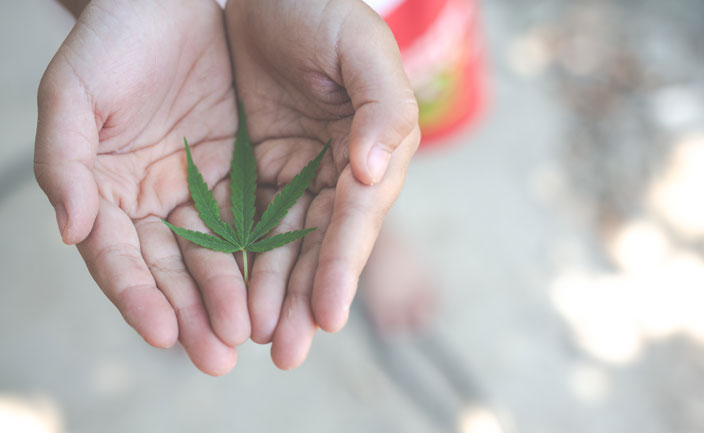
Why You Ought To Go Into a Residential Cure
People can change their medications and put their health in danger, or they can run into street hawkers with heroin to offer. It’s an environment filled with people who desire to get much better and staffers who desire to help people to do simply that.
Long-Term Aftercare and Regression Avoidance
Here, people with heroin addictions have the chance to fulfill with other people who have the very same kind of background. They end up being a little like a family, and because involvement is complimentary, people can keep going years without feeling any kind of monetary pinch. While 12-step groups can be essential for some, there are other people in heroin healing that need a bit more help to stay on the ideal course. These people might benefit from moving into a sober living neighborhood when an official heroin cure is complete.
Can I detox from heroin using methadone?
Scientific research study has developed that the medicinal cure of opioid use condition increases retention in cure programs and reduces substance abuse, transmittable illness transmission, and criminal activity.
When people addicted to opioids like heroin very first give up, they go through withdrawal symptoms (pain, diarrhea, queasiness, and throwing up), which might be extreme. While not a cure for addiction itself, cleansing is a beneficial very first step when some type of evidence-based cure follows it.
Medications established to deal with opioid use conditions work through the same opioid receptors but are much safer and less likely to create the hazardous habits that identify a compound use condition. Three types of medications consist of: (1) agonists, which trigger opioid receptors; (2) partial agonists, which produce a smaller sized step; and (3) villains, which obstruct the receptor and interfere with the gratifying results of opioids.
The research study is clear: Medication-helped cure works.
As soon as an individual’s body grows used to opioids but does not get enough of the drugs to please what it’s used to, withdrawal can pop up, triggering, amongst other symptoms, serious queasiness, and full-body pains. To prevent suffering through it, people normally look for out drugs like heroin and opioid pain relievers– not always to get a blissful high, but to feel regular and prevent withdrawal.
Considering that they are opioids themselves, they can meet an individual’s yearnings and stop withdrawal symptoms. People can take this for the rest of their lives, or in some cases, dosages might be minimized; it differs from client to client.
The research study backs this up: Many research studies, consisting of methodical evaluations of the research study, have found that medication-helped cure can cut the all-cause death rate amongst addiction clients by half or more. Simply envision if a medication came out for any other illness– and, yes, health experts think about addiction an illness– that cuts death by half; it would be a memorable discovery.
The medication-helped cure is different from conventional kinds of dealing with addiction in America, which tend to need abstaining. While some 12-step programs permit medication-helped cure, others forbid it as part of their need for overall abstaining.
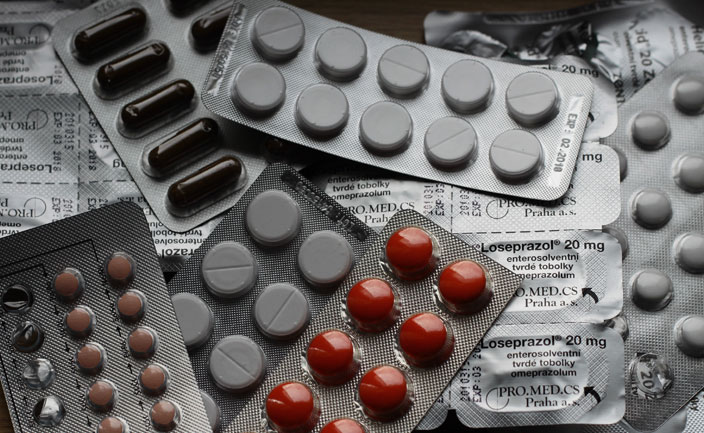
Heroin and Other Drugs
Heroin is an extremely addicting pain reliever manufactured from morphine, which originates from the seeds of the poppy plant. Any drugs obtained from them are thought-about opiates since poppy plants are utilized to make opium. Both heroin and morphine are opiates.
Heroin is also understood by names like scrap, smack, or “H.” Street heroin is frequently integrated with unsafe ingredients like morphine or the effective painkiller fentanyl.
As soon as in their lifetime, around 4 million Americans have tried heroin at least. Signs of extended heroin usage can consist of serious irritation, anxiety, and collapsed veins.
People who abuse pain relievers have a greater threat of exploring and ending up being addicted to heroin. Painkillers like OxyContin are categorized as opioids since they are artificial, opiate-like compounds triggering the exact same receptors in the brain as heroin.
Painkillers have comparable impacts on heroin, but these tablets can be difficult and costly to obtain. Since it is less expensive and more available, many people who end up being addicted to pain relievers turn to heroin.
The method of pain relievers are abused can lead to future heroin abuse. Some people squash up pain relievers to inject or snort, which presents them to approaches of administration typically used in heroin abuse.
In regular scenarios, the brain launches these chemicals to reward habits essential for survival, like consuming and assisting people in handling pain.
Heroin binds to and triggers particular receptors in the brain called mu-opioid receptors (MORs). Our bodies include naturally happening chemicals called neurotransmitters that bind to these receptors throughout the brain and body to control discomfort, hormonal agent release, and sensations of wellness.
When MORs are triggered in the benefits center of the brain, they promote the release of the neurotransmitter dopamine, triggering support of drug-taking habits.
The effects of triggering opioid receptors with externally administered opioids such as heroin (versus naturally taking place chemicals within our bodies) depend upon a range of elements: just how much is utilized, how highly it binds and for how long, how rapidly it arrives, and what takes place later.